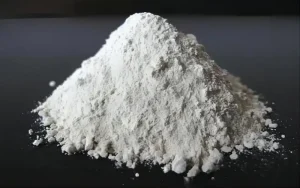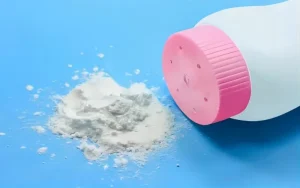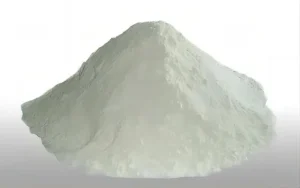BY  GENN
GENN
2024/03
Blog
What Is The Difference Between Magnesium Powder And Talcum Powder?
What is Magnesium Powder?
Particle size and production: The inert gas atomization process yields polydisperse magnesium powder with particle sizes ranging from a few microns to 0.51 mm. During manufacture, the melt is atomized using a nitrogen injection and a 3 ± 0.1 wt% oxygen addition while adhering to strict temperature guidelines.
Safety and Flammability Measures: When pure, either as a powder or ribbon, magnesium metal and its alloys—including magnesium powder—are extremely combustible. When handling magnesium powder, safety measures must be followed because it is combustible. Because magnesium powder is highly combustible, utilize safety glasses with visors and UV filters. Additionally, certain safety precautions must be followed.
Applications in Industry: Magnesium metal powder finds its use in numerous industrial processes, such as the synthesis of materials based on magnesium, the composition of powder metallurgy, and the creation of unique alloys and compounds.
Because of its special qualities, magnesium powder is a very adaptable material utilized in many different sectors. This fine chemical product is widely used in metallurgy, manufacturing, and other technical applications due to its high strength-to-weight ratio and lightweight nature.

What Is Talcum Powder?
The product talcum powder, sometimes referred to as talc powder, is derived from talc, a mineral mostly consisting of silicon, oxygen, and magnesium. It is extensively utilized in many other consumer goods as well as cosmetic items like face powders, body powders for adults, and baby powders. Talcum powder is useful for keeping skin dry and preventing rashes because of its well-known capacity to absorb moisture and reduce friction. Additionally, it is used to absorb moisture, stop caking, make face makeup opaque, and enhance the feel of a variety of personal care products.

What Is the Difference Between Magnesium Powder and Talcum Powder?
- Composition
Magnesium Powder: The main ingredient in magnesium powder is magnesium in powdered form. It’s a nutritional supplement that contains a lot of magnesium, which is essential for human health and supports blood pressure regulation, muscle and neuron function, and strong bones.
Talcum Powder: The mineral talc, which comprises silicon, magnesium, and oxygen, is used to make talcum powder. It is frequently found in cosmetic items including adult body and face powders and infant powder. It is commonly known that talcum powder effectively absorbs moisture, lowers friction, and keeps the skin dry.
- Utilization
Magnesium Powder: To raise the amount of magnesium in the diet, magnesium powder is taken as a dietary supplement. It is eaten for possible health advantages, such as helping with certain body processes.
Talcum Powder: Because it absorbs moisture, reduces friction, and keeps the skin dry, talcum powder is utilized in cosmetic goods. It is frequently utilized in adult body and facial powders as well as baby powders.
- Health Hazards and Debates
Magnesium powder: Although this dietary supplement has some potential health benefits, there are drawbacks to using it, particularly when consuming large doses. As with any supplement, it’s crucial to consider the dosage and associated hazards when taking magnesium powder.
talc powder The possible health dangers of talcum powder have been the focus of continuous research and discussion, especially with regard to the risk of ovarian cancer. A possible correlation between the occurrence of ovarian cancer and the usage of talc-containing powders in the vaginal area has been proposed by several studies. Concerns have also been expressed over the possibility that asbestos, a known carcinogen, contaminated talc.

- Applications in Industry and Cosmetics
Magnesium powder: Mainly used as a dietary supplement, magnesium powder also has potential industrial uses in metallurgy and medicine.
Talcum Powder: Because of its ability to absorb moisture and reduce friction, talcum powder is frequently used in cosmetic products. It is frequently present in face, body, and baby powders.
These variations draw attention to the different ingredients, applications, and possible health risks connected to talc and magnesium powder.
Special Mention In Sports
Before a game in several sports, players will dust themselves with white powder on their exposed flesh, including their arms, necks, and hands. Its true name is anti-skid magnesium powder, which is what several people are unaware of. Its primary functions during activity are sweat-absorbent and anti-skid.
Magnesium carbonate is the primary ingredient in anti-slip magnesium powder. Magnesium carbonate is a highly lightweight and practical desiccant. Magnesium powder can be made and then applied to exposed skin, such as the arms, necks, and palms, to either enhance or decrease sweating or absorb it. lessen the turbulence. Athletes’ palms perspire a lot during competition, which might negatively affect their performance. As a result, selecting high-quality anti-slip magnesium is crucial. Magnesium powder is more commonly used in gymnastics and weightlifting. Currently available forms of magnesium powder include powder, blocks, balls, and paste. Depending on their needs, athletes can select from a variety of anti-skid magnesium formulations.










